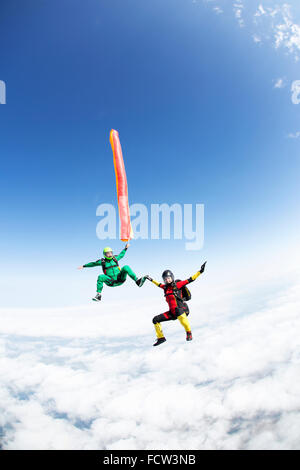

be clearly marked with approval information including the Administration which approved it, and any operational restrictions and.if they are to be used in a seaway, be capable of satisfactory operation in that environment.be fitted with retro-reflective material where it will assist in detection and in accordance with the recommendations of the Organization*.

be of a highly visible colour on all parts where this will assist detection.where exposed to sunlight, be resistant to deterioration.where applicable, be rot-proof, corrosion-resistant, and not be unduly affected by seawater, oil or fungal attack.if they are likely to be immersed in seawater during their use, operate throughout the seawater temperature range -1 degrees C to +30 degrees C.not be damaged in stowage throughout the air temperature range -30 degrees C to +65 degrees C.
:max_bytes(150000):strip_icc()/jump-482854945-58bc704e3df78c353c042f82.jpg)
80 FOOT FREEFALL SPEED CODE
By so doing, we will be able to better focus on the conceptual nature of physics without too much of a sacrifice in numerical accuracy.1.1.1 Convention means the International Convention for the Safety of Life at Sea, 1974, as amended.ġ.1.2 Effective clearing of the ship is the ability of the free-fall lifeboat to move away from the ship after free-fall launching without using its engine.ġ.1.3 Free-fall acceleration is the rate of change of velocity experienced by the occupants during launching of a free-fall lifeboat.ġ.1.4 Free-fall certification height is the greatest launching height for which the lifeboat is to be approved, measured from the still water surface to the lowest point on the lifeboat when the lifeboat is in the launch configuration.ġ.1.5 Launching ramp angle is the angle between the horizontal and the launch rail of the lifeboat in its launching position with the ship on even keel.ġ.1.6 Launching ramp length is the distance between the stern of the lifeboat and the lower end of the launching ramp.ġ.1.7 Regulation means a regulation contained in the Annex to the Convention.ġ.1.8 Required free-fall height is the greatest distance measured from the still water surface to the lowest point on the lifeboat when the lifeboat is in the launch configuration and the ship is in its lightest seagoing condition.ġ.1.9 Retro-reflective material is a material which reflects in the opposite direction a beam of light directed on it.ġ.1.10 Water-entry angle is the angle between the horizontal and the launch rail of the lifeboat when it first enters the water.ġ.1.11 The terms used in this Code have the same meaning as those defined in regulation III/3.ġ.1.8 Retro-reflective material is a material which reflects in the opposite direction a beam of light directed on it.ġ.1.9 Water-entry angle is the angle between the horizontal and the launch rail of the lifeboat when it first enters the water.ġ.1.10 The terms used in this Code have the same meaning as those defined in regulation III/3. We will occasionally use the approximated value of 10 m/s/s in The Physics Classroom Tutorial in order to reduce the complexity of the many mathematical tasks that we will perform with this number. There are slight variations in this numerical value (to the second decimal place) that are dependent primarily upon on altitude. The numerical value for the acceleration of gravity is most accurately known as 9.8 m/s/s. A matter of fact, this quantity known as the acceleration of gravity is such an important quantity that physicists have a special symbol to denote it - the symbol g. It is known as the acceleration of gravity - the acceleration for any object moving under the sole influence of gravity. This numerical value for the acceleration of a free-falling object is such an important value that it is given a special name. A free-falling object has an acceleration of 9.8 m/s/s, downward (on Earth). It was learned in the previous part of this lesson that a free-falling object is an object that is falling under the sole influence of gravity.


 0 kommentar(er)
0 kommentar(er)
